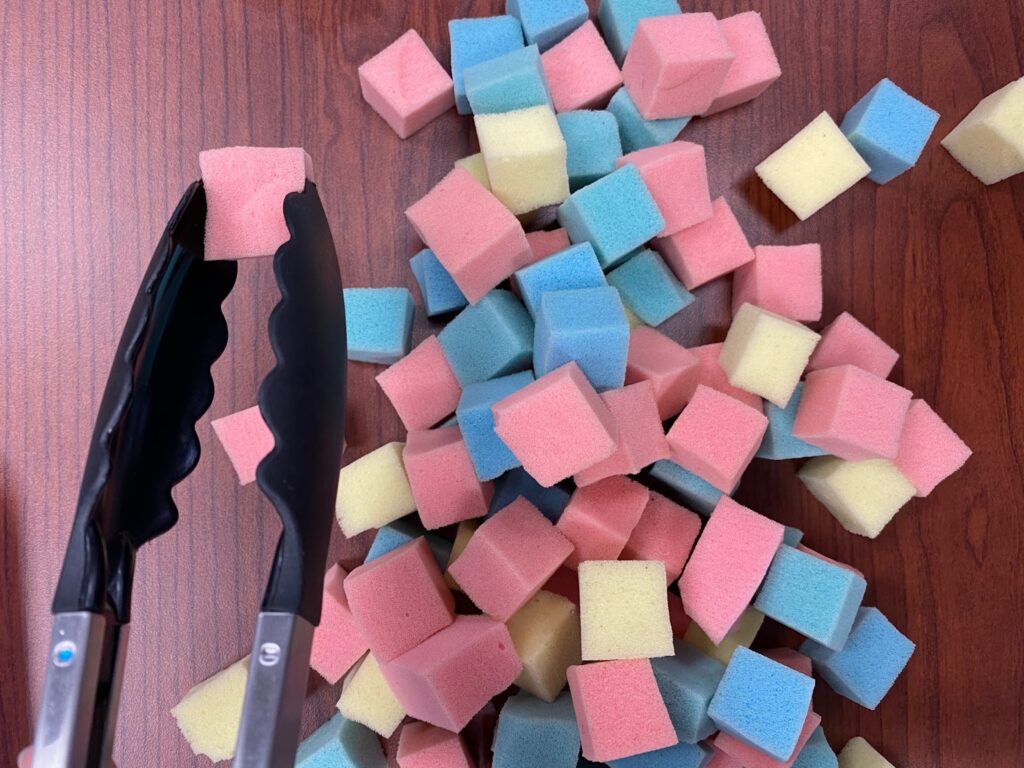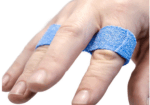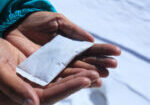5 return-to-cooking activities (that don’t require a kitchen)
Filed under Treatments
Hand therapy can and should be very occupation-based. Every week, we hear comments from patients that back that statement up:
“I need to get back to work”
“I just want to golf again”
“I can’t even open a water bottle”
“My spouse has to do all of the cooking”
Although standard exercises are helpful, it’s critical to add in functional activities that empower clients to get back to the things that they love in life.
As part of an occupation-based plan of care, it is important for us to help our clients identify key occupations. A very popular one being Cooking!
But, most hand therapists don’t have access to a kitchen in their clinic. To help improve the client’s return to daily activities and IADLs, here are 5 occupational therapy cooking activities for adults, that don’t require a kitchen.
- Theraputty (Turning) Tools: Theraputty tools can be used to simulate many functional activities (therapeutic cooking activities)! Including: opening a water bottle top or a tight jar lid. Try adding these ‘turning’ tools into your patient’s next session if they have grip strength limitations keeping them from the kitchen!
Side Note: Be sure to explain what these tools are targeting. Helping your client to connect the dots between their theraputty exercises and finally making their favorite recipe again can improve their motivation and engagement in the task at hand.
- Ball Balance on Frying Pan: Letting your patient get comfortable with the dynamic load of a frying pan in the clinic can help to improve their strength, wrist stability, and their self-efficacy to go home and put those skills to work. Try having your patient balance a tennis ball or even flip bean bags with a frying pan.
- Putty Rollout with a Rolling Pin: This bilateral task can promote functional grasp and work on wrist mobility into flexion and extension, all while preparing an individual to get back to making their famous sugar cookies again.
- Bean/Rice Transfer with Measuring Cups: With these simple items you can address forearm rotation with light resistance and functional use of the affected extremity . This activity is easy to simulate. And afterwards, consider hiding some coins in those same beans for another one of our favorites- a coin find!
- Tong transfer: You can incorporate tongs into so many different ‘transfer’ activities. We like to start by doing a simple foam cube transfer. However, if your patient really wants to get back to grilling out again, you might consider having them work up to flipping beanbags. The opportunities are endless, and these utensils are so functional! Another cool thing about tongs: they can address various grasp patterns, including the lumbrical grasp for intrinsic strengthening.

There you have it. 5 activities that can be simple to simulate in a clinic without a kitchen! We hope that these inspired you to keep things occupation-based, client centered, and to get your clients back to cooking!
5 Comments
Leave a Comment
More To Read
A randomized clinical trial comparing early active motion programs: Earlier hand function, TAM, and orthotic satisfaction with a relative motion extension program for zones V and VI extensor tendon repairs
By Brittany Day Collocott SJ, Kelly E, Foster M, Myhr H, Wang A, Ellis RF. A randomized clinical trial comparing early active motion programs: Earlier hand function, TAM, and orthotic satisfaction with a relative motion extension program for zones V and VI extensor tendon repairs. Journal of Hand Therapy. 2019. doi:10.1016/j.jht.2018.10.003 The Skinny- This is…
Read MoreHow Weather Changes Affect Joint Pain
By: Lucas Godwin How Weather Changes Affect Joint Pain Numerous potential factors can cause weather-related joint pain, including humidity, temperature, precipitation, and changes in barometric pressure. Scientists have performed many studies on joint pain and weather over the years, but so far, none can say for sure what the connection is. Timmermans et al., 2015…
Read More“Do joint mobilizations assist in the recovery of lateral elbow tendinopathy? A systematic review and meta-analysis”
By Sophia Grimm Lucado, A. M., Dale, R. B., Vincent, J., & Day, J. M. (2019). Do joint mobilizations assist in the recovery of lateral elbow tendinopathy? A systematic review and meta-analysis. Journal of hand therapy : official journal of the American Society of Hand Therapists, 32(2), 262–276.e1. https://doi.org/10.1016/j.jht.2018.01.010 The Skinny: The purpose of this study was…
Read MoreStretching Alone Can Change P1 Bone Shape in Patients with Camptodactyly
Woo Hong, S. Kim, J., Sang Kwon, O., Ho Lee, M., Sik Gong, H., Hyun Baek, G., (2019). Radiographic Remodeling of the Proximal Phalangeal Head Using a Stretching Exercise in Patients With Camptodactyly. J Hand Surg Am, 1.e1-1.e10 The Skinny – Camptodactyly is a congenital, nontraumatic flexion contracture of the PIP in fingers other than…
Read MoreSign-up to Get Updates Straight to Your Inbox!
Sign up with us and we will send you regular blog posts on everything hand therapy, notices every time we upload new videos and tutorials, along with handout, protocols, and other useful information.







These are GREAT!! I plan to share with my OT staff. I am fully convinced you can use kitchen activities for many therapeutic interventions that relate to Occupation.
These are awesome ideas! I get stuck in the same rut with theraputty activities, now I can incorporate some ADL training in there as well! Thanks for the ideas!
thank you for wonderful ideas
These are a welcome addition to my repetoir.
That’s great idea. I’ll tell to my wife soon.